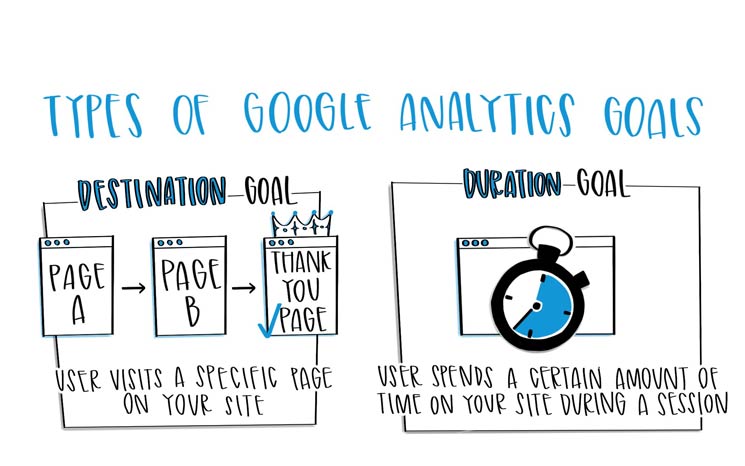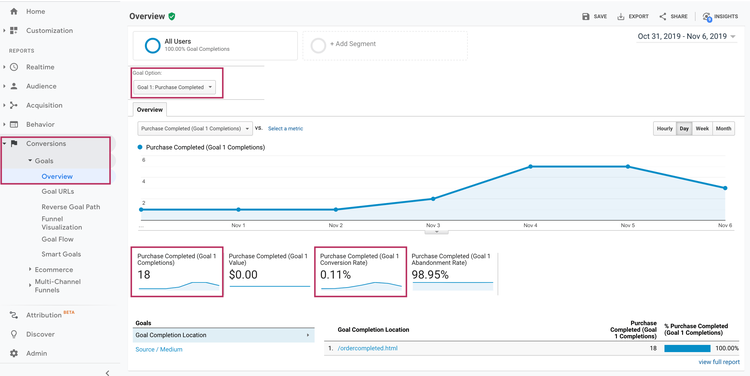Discover What Data Is Google Analytics Goals Unable to Track
Discover What Data Is Google Analytics Goals Unable to Track
Blog Article
Discover the Limitations of Google Analytics Goals: Introducing the Data Types That Remain Untrackable
As organizations significantly depend on data-driven decision-making, understanding the limitations of tools like Google Analytics ends up being critical. While Google Analytics Goals deal valuable understandings into user interactions, there exist information kinds that thwart tracking, posturing challenges to an extensive understanding of customer behavior.
Incomplete User Journey Tracking
Insufficient individual trip monitoring within Google Analytics can prevent the capacity to properly assess user behavior. When the user journey is not totally tracked, there are spaces in the data that avoid a thorough understanding of just how individuals interact with a web site. This lack of understanding can cause missed out on chances for optimization and enhancements to the individual experience.
One usual concern with insufficient individual trip tracking is the lack of ability to see the complete course that users take before finishing an objective or leaving the site. Without this info, it is challenging to identify where customers may be running into obstacles or friction points that prevent them from transforming. In addition, insufficient tracking can obscure the effect of particular marketing efforts or web site adjustments on user behavior.
To address this constraint, it is essential to establish appropriate monitoring mechanisms within Google Analytics to catch the whole customer journey. This may entail establishing up event tracking, goal funnels, or utilizing tools like Google Tag Manager to guarantee that no crucial communications go unrecorded. By getting a thorough view of the customer trip, web site owners can make more informed choices to boost individual interaction and drive conversions.
Acknowledgment Challenges
Navigating through attribution difficulties in Google Analytics calls for an extensive understanding of how different touchpoints add to the total conversion procedure. Acknowledgment challenges emerge from the intricacy of modern-day customer trips, where customers communicate with numerous networks prior to transforming.
One usual attribution difficulty is the trouble in associating conversions to the right source, especially in cases where customers engage with numerous networks prior to converting. Additionally, cross-device monitoring poses an additional acknowledgment difficulty, as customers often switch over between gadgets during their trip, making it testing to track their interactions effortlessly.
Offline Conversions
Provided the obstacles associated with associating conversions accurately in online channels, the dimension of offline conversions presents a significant chance for marketing professionals looking for a much more detailed understanding of their customers' journey. Offline conversions describe activities that customers take in the real world, such as making purchases in brick-and-mortar stores or over the phone, going to occasions, or involving with published products - what data is google analytics goals unable to track. These conversions are crucial for services that run both online and offline, as they provide useful understandings into the performance of advertising and marketing campaigns across various touchpoints
Tracking offline conversions commonly presented a considerable obstacle for marketing professionals, as it was testing to connect these actions back to particular on-line interactions properly. With advancements in innovation, such as the assimilation of CRM systems, distinct identifiers, and coupon codes, organizations can now connect the void between online and offline data to gain an extra holistic sight of consumer actions. By effectively site here determining offline conversions, marketers can maximize their approaches, designate sources much more effectively, and eventually improve the total customer experience.
Cross-Device Tracking
Cross-device monitoring plays a critical function in understanding the interconnected nature of customers' electronic interactions across numerous gadgets. In today's omnichannel globe, where individuals perfectly switch in between smart devices, desktops, and tablet computers, tracking their habits throughout these gadgets is crucial for online marketers to obtain a detailed sight of their client journey.

In addition, privacy problems and guidelines such as GDPR and CCPA have further challenging cross-device tracking. With users demanding more control over their information and raised constraints on tracking modern technologies, marketing professionals have to locate privacy-compliant and cutting-edge ways to attach user communications throughout devices.
Dynamic Content Involvement
Understanding individual involvement with vibrant web content is critical in optimizing electronic marketing methods for enhanced audience interaction. Dynamic web content refers to website aspects that change based upon individual behavior, preferences, or various other elements, using an individualized experience. Tracking individual communications with vibrant content positions obstacles for standard analytics tools like Google Analytics.
While Google Analytics can track fundamental communications like clicks and page views, it might battle to capture more nuanced interactions within dynamic material. what data is google analytics goals unable to track. Metrics such as time spent on specific vibrant elements, float activities, or interactions within pop-ups are usually not quickly quantifiable utilizing typical monitoring methods. This limitation hinders online marketers' ability to fully comprehend exactly how individuals are involving with dynamic material and tailor their approaches accordingly

Conclusion
In verdict, Google Analytics goals have restrictions in tracking insufficient customer trips, attributing conversions accurately, catching offline conversions, tracking cross-device communications, and measuring vibrant material interaction. These constraints highlight the significance of checking out additional tracking techniques and devices to acquire an extra thorough understanding of individual habits and conversions past what Google Analytics can provide.
While Google Analytics Goals offer valuable insights right into customer interactions, there exist data look at here now types that avoid tracking, posturing challenges to a detailed understanding of customer actions.Incomplete customer journey monitoring within Google Analytics can impede the capability to precisely examine individual behavior. When the user journey is not fully tracked, there are spaces in the data that stop a comprehensive understanding of exactly how users interact with a site.One common concern with insufficient customer journey tracking Read More Here is the failure to see the full course that users take previously completing an objective or leaving the website. By getting a comprehensive sight of the individual journey, website proprietors can make even more informed choices to improve user interaction and drive conversions.
Report this page